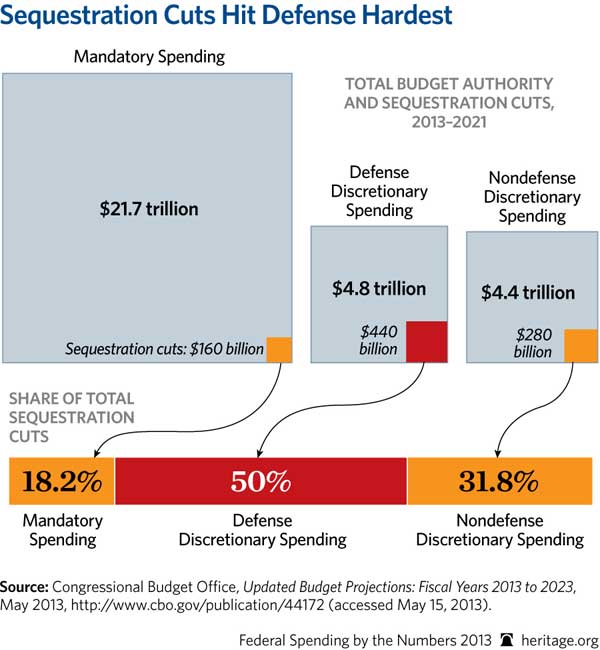Last Thursday, Chief of Naval Operations Admiral Jonathan Greenert warned that some of the crown jewels of the Navy could be on the chopping block next fiscal year if Congress fails to come to an agreement on how to reprogram sequestration cuts. Without the ability to protect national defense from sequestration, the Navy could be forced to cut a Virginia-class submarine and a destroyer from its budget for the next fiscal year.
Admiral Greenert’s comments are a troubling illustration of how disproportional sequestration cuts to the defense budget will result in the loss of military capabilities. That these cuts are occurring at a time when the Navy is already failing to meet the minimum 313-ship fleet needed to meet current obligations is worrisome, particularly as China’s naval program gathers steam and its leaders articulate the goal of making China a “strong maritime power.”
Dodging sequestration will not avert the military’s current crisis. A decade of combat operations and two decades of underinvestment have left the U.S. military too small and inadequately equipped to meet all of the growing demands placed upon America’s men and women in uniform. The military’s equipment is old, unreliable, increasingly obsolete, and insufficient in number.
Since 2009, the government has reduced defense spending on three separate occasions by a total of close to $1.5 trillion. These decisions were made with no analysis of their impact on the military or the national security strategy. And the consequences of those decisions are already here. Air Force Chief of Staff General Mark Welsh recently warned that, if an order comes down to attack Syria, the Air Force would not be as ready as he would like. This flies in the face of the public perception that defense cuts are about eliminating waste and inefficiency in the Pentagon.
Today, America faces a number of threats to its vital national interests: the return of great-power competition, the proliferation of weapons of mass destruction and weapons of lethal precision, the spread of violent extremism, and the dangers presented by failed or failing states.
Defense, as a core constitutional function of the federal government, should be fully funded and efficiently delivered. To provide more for national defense, Congress can reprogram the sequestration cuts by reducing domestic spending. One effective way for Congress to accomplish domestic spending cuts is to eliminate programs that are failing or should not be funded by the federal government anyway.
But Congress should not raise taxes to fuel more discretionary spending as President Obama calls for. This would only make Washington’s spending and debt problem even worse while reneging on a promise to the American people to cut spending as part of the 2011 debt limit increase.
Supporting America’s armed forces in times of war and peace is a fundamental obligation of government. The U.S. has a responsibility to provide for the common defense and protect the nation. America cannot remain a first-rate power if it continues to take the military for granted.
































